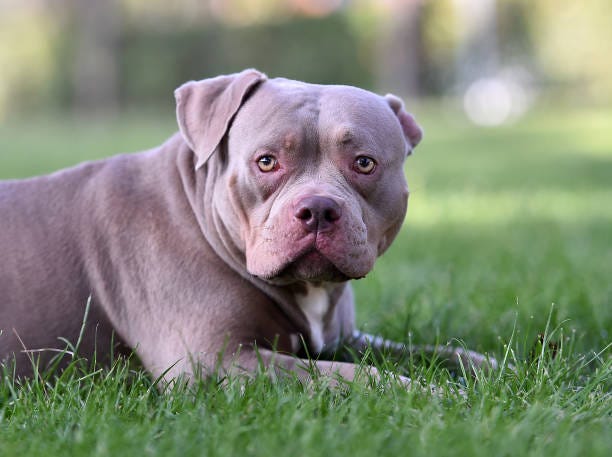Understanding Dog Behavior: Debunking the "Aggressive Gene" Myth
Written on
Chapter 1: The Misconception of Aggression in Dogs
Recently, the American XL Bulldog has been the subject of negative media attention, particularly following a series of attacks that led to its ban in the UK. I learned about this incident through a friend residing there, along with claims from breeders attributing these behaviors to an “aggressive gene.”
It’s time for breeders to refrain from discussing topics they lack understanding about. These are often the same individuals who mistakenly claim certain breeds are “hypoallergenic,” a term that simply does not exist.
In reality, the notion of an “aggressive gene” is a fallacy. Aggression in dogs, much like in humans, can stem from innate personality traits or learned behaviors. When it comes to personality traits, who do you think is responsible for continuing that lineage?
Breeders!
A notable issue arose when blue-nosed pit bulls were deemed more aggressive than their counterparts of different colors. However, there is no correlation between fur color and temperament. The individuals involved in dog-fighting circuits preferred that specific color and selectively bred them for aggression, thereby creating a lineage of blue-nosed pit bulls predisposed to aggressive behavior.
The root of this aggression? Humans.
There are certainly individuals who display natural aggression, yet something must provoke such behavior. Is this a genetic trait or a learned one? It's a learned trait. There is simply no such thing as an “aggressive gene.”
If there were, I would need to revisit my understanding of biology. As a veterinary technician, I have formal training that the breeders spouting these claims lack. They may know how to mate two dogs, but that doesn’t make them experts in the science of animal behavior.
Aggression can manifest in any breed. Those who support breed bans or label certain breeds as dangerous are equally misinformed.
Just yesterday, my husband and I faced the challenge of trimming our dog’s nails. He is a gentle Husky/Great Pyrenees mix who craves affection and treats. Even during his rough past when he was emaciated and abused, he demonstrated his submissive nature by sharing his food with my other dog. However, under the stress of discomfort from allergies, he attempted to bite us while we were trimming his nails.
Section 1.1: Understanding Canine Behavior
This incident was not indicative of an aggressive dog, yet he lashed out in response to pain. We had to take frequent breaks, but ultimately, we comforted him through the process.
This is a gentle dog, yet he reacted with a bite attempt because he was in distress. All dogs, regardless of breed, can exhibit aggressive behaviors when provoked.
Conversely, my other dog, a pit bull, allowed me to cut her nails with minimal fuss. She had a traumatic past but was remarkably well-behaved during the process.
Subsection 1.1.1: The Complexity of Dog Training

She was once a victim of abuse, yet she acted heroically by defending a cat instead of attacking it. Despite her history, she was well-adjusted and was eventually adopted into a loving home.
The belief that certain breeds are inherently aggressive is not only misguided but reflects a poor understanding of canine behavior. The XL American Bully, like any breed, can exhibit a range of temperaments.
Section 1.2: Misconceptions About Breeds
Many people wrongly associate aggression with specific breeds while ignoring the fact that even small breeds like Chihuahuas can be aggressive. Just because a breed is smaller doesn’t mean it’s less capable of inflicting harm.
The stigma surrounding bully breeds is outdated. They are often mischaracterized, and it’s frustrating to see this narrative perpetuated. People tend to accept false claims, such as the idea that some breeds are hypoallergenic.
Chapter 2: The Role of Breeding and Training
The first video title is Sound Wave - YouTube: This video explores the concept of sound waves and their effects on animal behavior, emphasizing the importance of environment in shaping temperament.
The second video title is Gene Fullmer vs Gil Turner 2 (Full Fight Highlights) - YouTube: This highlights the importance of training and conditioning in competitive situations, drawing parallels to dog training and temperament.
If there were indeed an aggressive gene, breeders would be responsible for perpetuating it. Dogs do not select mates based on personality traits. They are specifically bred for certain characteristics, whether for guarding or fighting. The tragedy that ensues is a result of both breeding choices and irresponsible ownership.
Ultimately, the only truly innocent party in these scenarios is the dog. If aggression is provoked, dogs can cause significant harm, but unprovoked aggression is not common in either breed that comprises the XL Bully.
I’m frustrated by the media’s portrayal of these dogs and the irresponsible rhetoric from breeders who lack expertise. The dogs suffer the consequences of these misconceptions, and I empathize with every bully breed owner in the UK facing potential loss due to this misinformation.
I urge those who spread these misconceptions to reconsider their stance. If you don’t wish to own a bully breed, that’s your choice, but don’t label them all as dangerous. They aren’t.
Understanding the science behind canine behavior is crucial before making public statements.